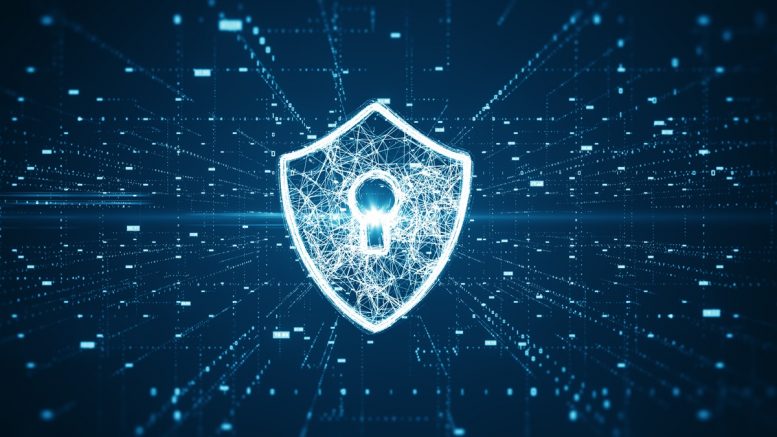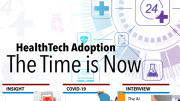Cybercrime has become more complex and frequent. Every year, cybercriminals look for new ways to siphon funds off businesses, exploiting vulnerabilities in every industry, including the mental health sector. Mental health services are particularly vulnerable due to the rise of digital tools they offer.
While these technologies are essential for increasing access to care, they open doors for cyberthreats. Therefore, mental health providers must adopt cybersecurity protective measures against cybercriminal activities to ensure the safety and privacy of their digital interactions with clients.
Digital Mental Health Is on the Rise
The rise of digital mental health services traces back to COVID-19. The pandemic disrupted lives and had a profound impact on mental health. Researchers found that regions with higher COVID-19 case rates experienced a substantial increase in reports of depression.
Following the first year of the pandemic, research showed that about 60% of students had at least one mental health problem during the 2021-2022 school year. With these statistics, health care professionals realized an urgent need for mental health support. As a result, the adoption of digital platforms for therapy and counselling increased.
Even before the pandemic began, the demand for digital mental health services surged due to convenience and immediate access to care. These services have filled a gap for individuals seeking support in all mental health conditions, especially when in-person therapy became inaccessible during lockdown.
However, this expansion in access to care has amplified the exposure of sensitive data to cyberthreats. As these services transition to online platforms, the amount of personal and health-related information stored online has skyrocketed. This creates a larger attack surface for cybercriminals who are constantly on the lookout for security weaknesses.
How Cyberattackers are Targeting Mental Health Professionals
Since digital systems have become a major target for cybercriminals, attackers employ any strategy to steal data. These methods include everything from phishing and ransomware to malware attacks.
Typically, they use fraudulent emails to trick individuals into revealing passwords or downloading a bug. They’ll also look for weaknesses in network security to gain unauthorized access to data. Once inside, they can steal or encrypt information and demand hefty ransoms. They may also use it to steal banking information and transfer funds to their accounts.
The ramifications of such breaches are costly. They compromise patient confidentiality by accessing their information, leading to financial fraud and identity theft. Exposures like this can erode the trust between clients and therapists. Although cyberattacks steal a significant amount of business profits, their impact is even greater due to the damage they cause to businesses’ reputations.
Cyberattacks are a great threat to mental health professionals, calling for individuals in this field to adopt the latest cybersecurity measures.
Tips for Implementing Cybersecurity in the Mental Health Care Industry
Professionals can implement several cybersecurity best practices to guarantee the protection of mental health services and clients.
1. Use Secure Communication Platforms
Adopt secure communication tools by choosing servers that use end-to-end encryption. They should also comply with health care privacy standards like HIPAA so all conversations remain confidential. Whether communication is via text, voice or video, mental health practitioners must conduct their research before investing in a platform.
2. Educate and Train Staff on Cybersecurity
Keep staff informed of cybersecurity best practices. Training sessions should be routine to familiarize team members with the latest phishing scams and hacking techniques. This will also empower employees to recognize threats and respond appropriately. Teaching and training about cybersecurity protocols helps health care professionals greatly reduce the chances of a successful cyberattack.
3. Implement Strong Password Policies
Mental health professionals should use unique passwords, as many password-creation techniques are weak. They also change them too infrequently. One way to guarantee strong password creation is through Google Password Manager.
At least 60% of people in the U.S. use Google Chrome, and this tool makes it convenient for users to save all their passwords in one place. Additionally, they should adopt two-factor authentication to protect the information even if a password is compromised.
4. Regularly Update Software
Software updates often include security patches that address vulnerabilities discovered since the last version. Regularly updating all systems and applications is crucial for reducing exposure to cyberthreats. Staff can ensure they implement this best practice by setting reminders and checking for updates. They can also set up the software so it updates automatically. This will ensure it maintains the highest level of security and data safety.
5. Secure Physical and Digital Access
Physical security involves controlling access to offices and file storage areas. This is often done through keycard systems and locks. On the digital side, mental health professionals should implement access controls on electronic health records and other sensitive systems. Employ user-level permissions to decrease the risk of data exposure. Tailoring access rights to each staff member’s role helps mental health practitioners prevent unauthorized user access and enhance security.
6. Implement a Cybersecurity Framework
Mental health care professionals should create a structured approach to managing and mitigating cyber-risks. Frameworks — such as the NIST Cybersecurity Framework — have guidelines that cover the steps to managing cybersecurity risks. Following these best practices enables professionals to assess their security posture and identify gaps within their systems. From there, they can take corrective action to make improvements.
7. Create an Incident Response Plan
An incident response plan is an essential strategy needed to manage a cyberattack. It outlines the steps taken after detecting a breach. These include identifying and isolating affected systems, notifying affected individuals, and reporting the incident to authorities.
It also details communication strategies, recovery processes and more. A well-defined incident response plan ensures a quick response to security incidents, reducing damage and upholding responsibility.
Prevent Cyberattacks With Best Practices
Cybersecurity is fundamental to providing safe and reliable mental health services. As cyberthreats evolve, so must mental health practitioners’ defenses. Beyond implementing best practices, the best approach requires continuous learning and improvement. This guarantees the protection of client data, maintaining trust and confidentiality in mental health care.
By Zac Amos, rehack.com





